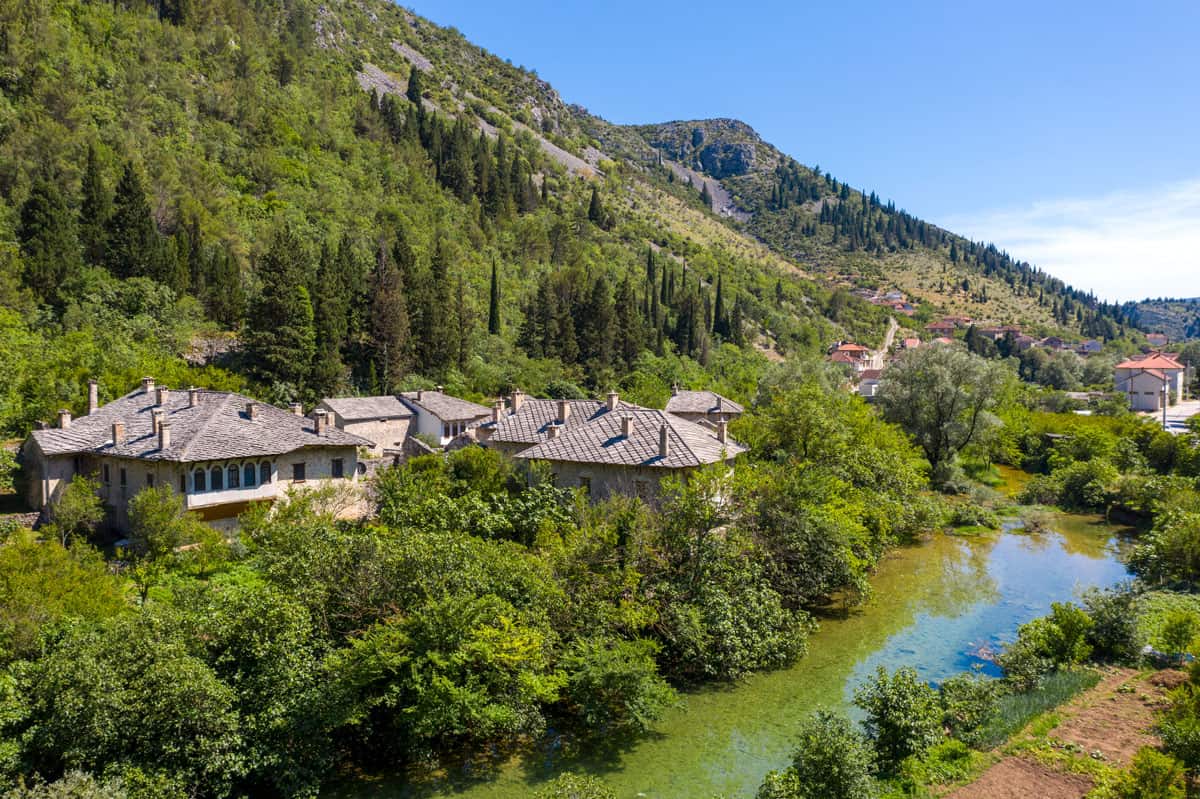
Begovina is a residential estate of the feudal family Rizvanbegović, built in the mid-19th century. In 1833, Herzegovina was established as a separate administrative unit within the Ottoman empire, and the vezir (regional governor) title was assigned to Ali-paša Rizvanbegović. Soon after that, the Rizvanbegović family relocated from the Vidoški fortress into the town centre, and subsequently built the residential estate Begovina with accompanying buildings. In order to protect it from bandit attacks, Begovina was surrounded by walls with loopholes. The estate respected the natural terrain and the required privacy of each family.
The residential estate Begovina consist of four parts representing a gradation of space from the public to the private, family part. The first, public part of the unit is the access road, the second part is made up of the front or access courtyard with four buildings, followed by the semiprivate and finally private courtyards for family life. The third and fourth part of the unit, i.e. the semiprivate courtyards and family houses are surrounded by a large stone wall extending on three sides. The Begovina estate also housed a mekteb, a religious school for children. The buildings are connected through the outer courtyard which also housed a space for fitting horseshoes. The river Bregava is channelled into each courtyard in which cisterns were used to supply water. Begovina also incorporated five guest houses equipped with bathrooms. The Begovina estate was burnt down in 1993 and has only been partially reconstructed.